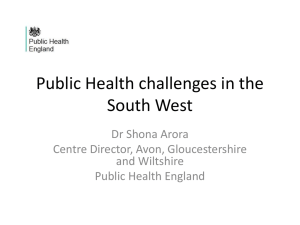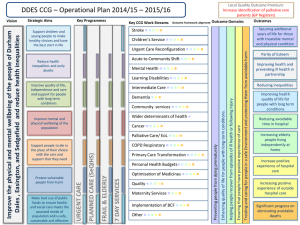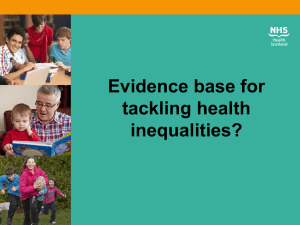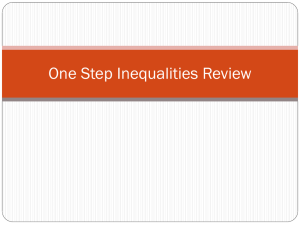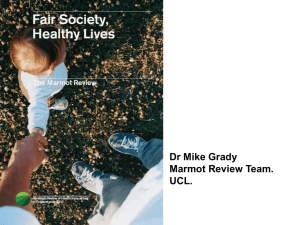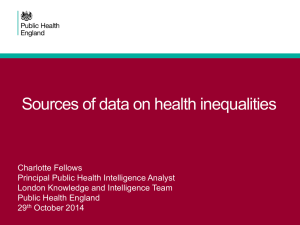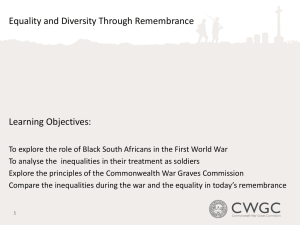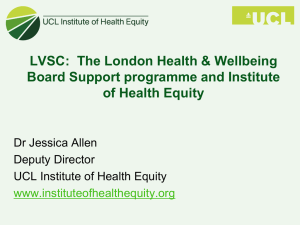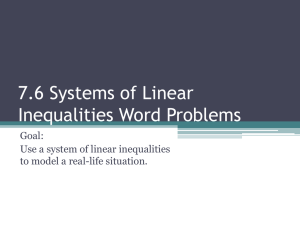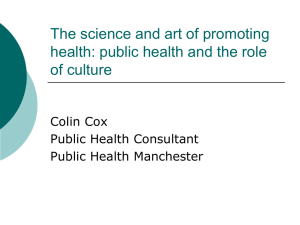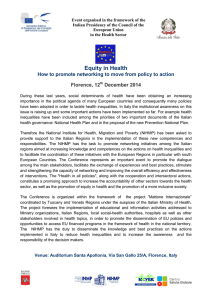Institute Of Health Equity Presentation July
advertisement
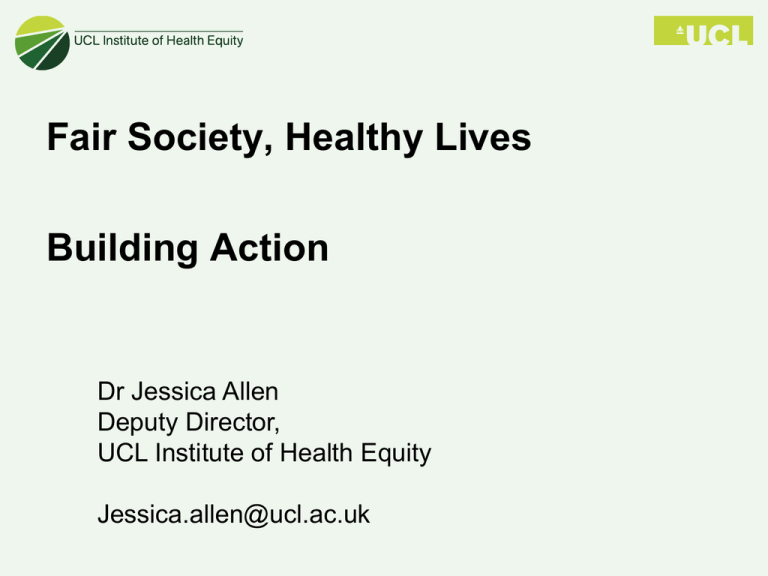
Fair Society, Healthy Lives Building Action Dr Jessica Allen Deputy Director, UCL Institute of Health Equity Jessica.allen@ucl.ac.uk Action on inequalities depends on: Political Leadership Sector Leadership – Evidence – Financial case – Delivery and implementation – Levers and accountabilities – Advocacy and persistence Political leadership • • • • • WHO Health system National governments Local governments Individuals – health system and beyond Key principles • Social justice • Material, psychosocial, political empowerment • Creating the conditions for people to have control of their lives www.who.int/social_determinants 2010 commissioned by labour implemented by coalition govt Cross party support Evidence Fair Society: Healthy Lives: 6 Policy Objectives A. Give every child the best start in life B. Enable all children, young people and adults to maximise their capabilities and have control over their lives C. Create fair employment and good work for all D. Ensure healthy standard of living for all E. Create and develop healthy and sustainable places and communities F. Strengthen the role and impact of ill health prevention Key themes Reducing health inequalities is a matter of fairness and social justice Action is needed to tackle the social gradient in health – Proportionate universalism Action on health inequalities requires action across all the social determinants of health Reducing health inequalities is vital for the economy – cost of inaction Beyond economic growth to well-being Cost of Inaction • In England, dying prematurely each year as a result of health inequalities, between 1.3 and 2.5 million extra years of life. • Cost of doing nothing • Action taken to reduce health inequalities will benefit society in many ways. It will have economic benefits in reducing losses from illness associated with health inequalities. Each year in England these account for: – productivity losses of £31-33B – reduced tax revenue and higher welfare payments of £20-32B and – increased treatment costs well in excess of £5B. • Lots of reports and building cost evidence where possible. – European Review – Reports about fuel poverty, green spaces, hospitals, heath professionals, children centres – And evidence for local action (phe) Delivery and implementation Areas for action – the life course. Do something... do more... do better • Where there is very little in place in terms of policies on social determinants of health, “some” action matters. • „ Where policies do exist, they can be improved to deal with large and persistent health inequities • „ There is scope to do better on inequities even in the richest areas. LOCAL IMPACT: DH remit • Local authorities –75% of local authorities have been significantly influenced by Marmot, evidence by their Health and Wellbeing Strategies and JSNAs (joint Strategic Needs Assessments) –We have worked directly with 40 plus local authorities National advice • advisory roles • Select committees • Working with core DH teams • Advocacy – Ministerial and cross departments Accountabilities and levers Health Inequalities legislation • Legal duties to reduce health inequalities for the first time • Platform for joining up health services, social care services and health-related services at local level Social Value Act Act 2012 public bodies in England and Wales must consider: • How what is being proposed to be procured might improve the economic, social and environmental well-being of the relevant area, and • How, in conducting the process of procurement, it might act with a view to securing that improvement” Marmot indicators for local authorities • Male and female life expectancy • Slope indices of inequality (SII) for male and female life expectancy • Slope indices of inequality (SII) for male and female disabilityfree life expectancy • Children achieving a good level of development at age 5 • Young people who are not in education, employment or training (NEET) • People in households in receipt of means-tested benefits • Slope index of inequality for people in households in receipt of means-tested benefits • Lancashire 2012 Context – economic downturn, recession, austerity – uneven growth Fair Society: Healthy Lives: some areas for concern A. Give every child the best start in life - Funding issues, child poverty B. Enable all children, young people and adults to maximise their capabilities and have control over their lives - Skills training, NEETS, whole school approaches C. Create fair employment and good work for all - Youth unemployment, contract workers, insecure employment, involuntary part-time working, ALMP policies D. Ensure healthy standard of living for all - Minimum income standard, minimum wages, benefit caps E. Create and develop healthy and sustainable places and communities - Green policies, social isolation, housing F. Strengthen the role and impact of ill health prevention - Cost inflation, resource allocation, demographic pressures • Report on impact of demographic change, recession and welfare reform on health inequalities in London and production of indicators to monitor and measure impact. Evidence from previous economic downturns suggests that population health will be affected: • • • • • • More suicides and attempted suicides; possibly more homicides and domestic violence Fewer road traffic fatalities An increase in mental health problems, including depression, anxiety and lower levels of wellbeing Worse infectious disease outcomes such as TB + HIV Negative longer-term mortality effects Health inequalities are likely to widen Recession indicators • Piloted in 4 boroughs in London • Report and analysis www.instituteofhealthequity.org/projects/indicatorset-the-impact-of-the-economic-downturn-andpolicy-changes-on-health-inequalities-in-london 4 Domains EMPLOYMENT INCOME AND MIGRATION OF VULNERABLE FAMILIES HOUSING HEALTH AND WELLBEING Advoacy and persistence • Lots of it! Thank you www.instituteofhealthequity.org
